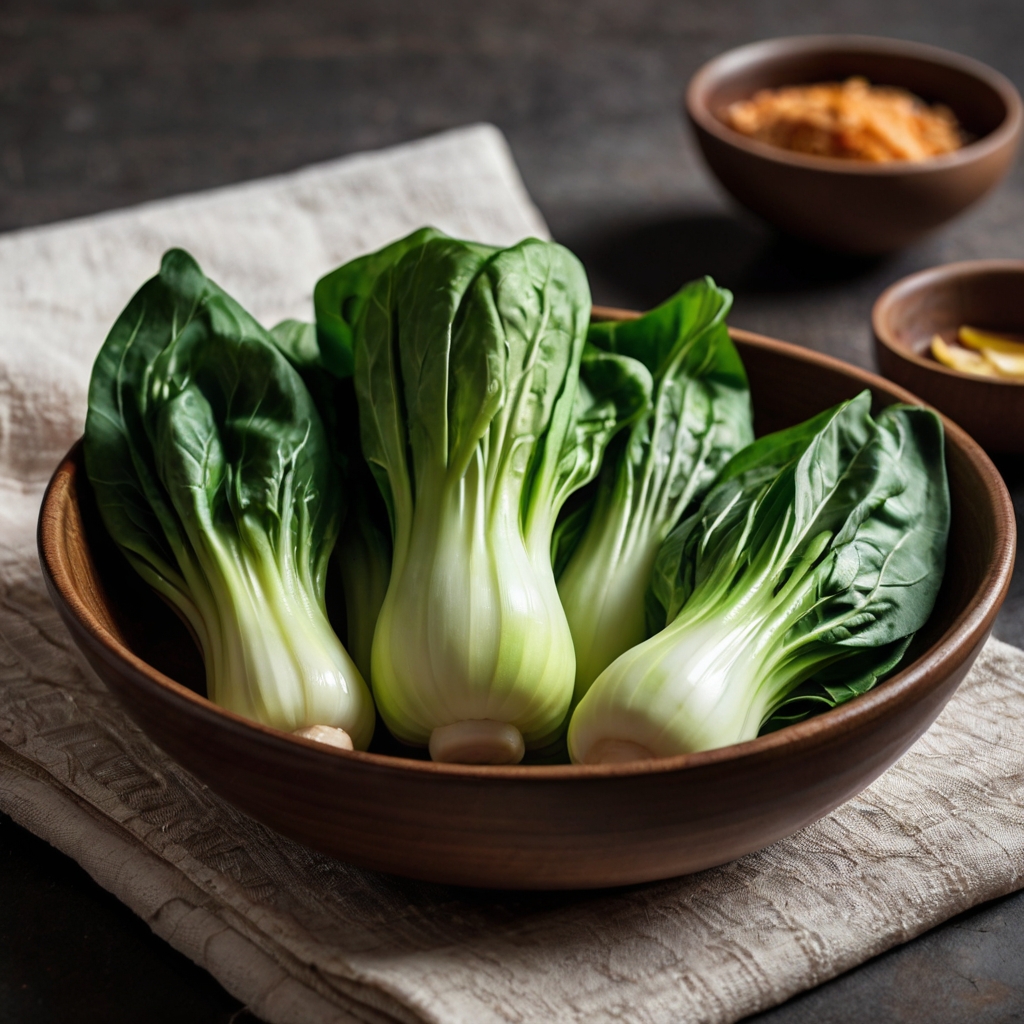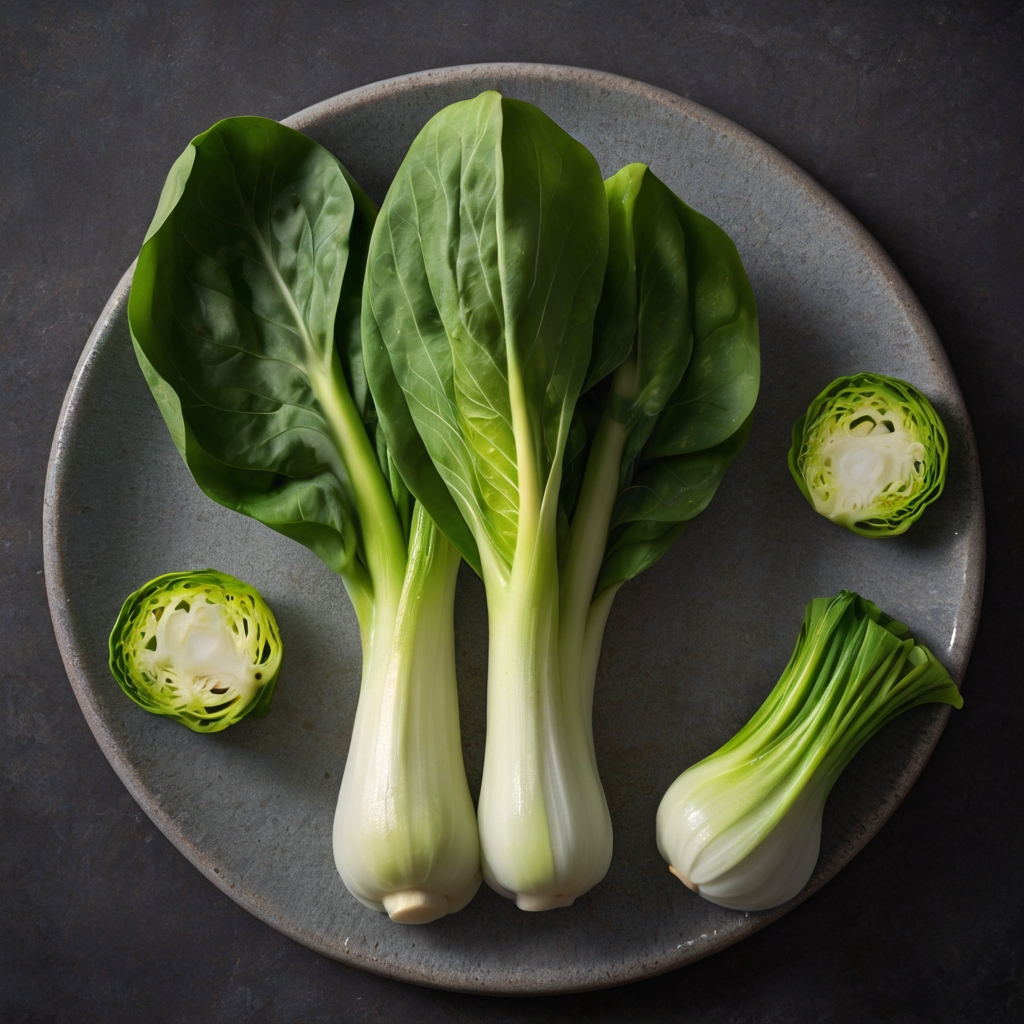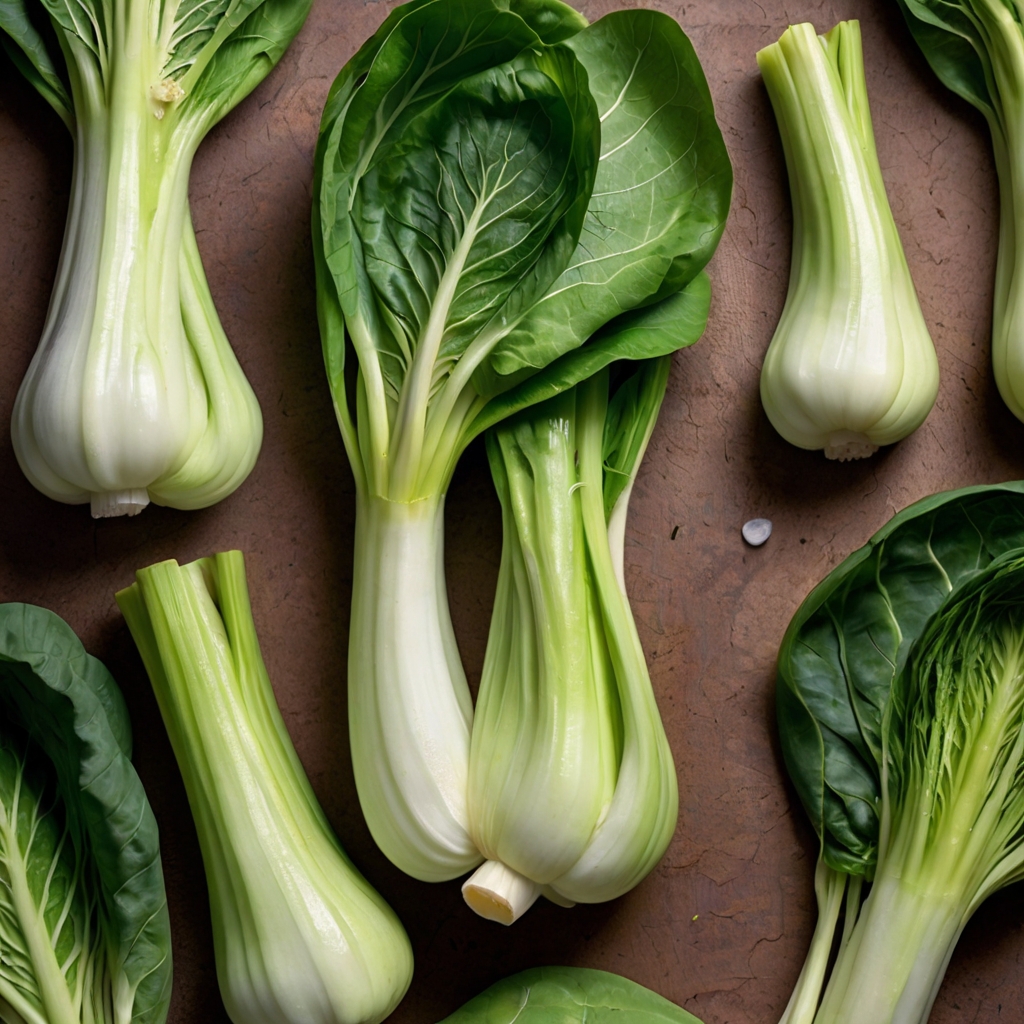The Best Way to Cook Bok Choy: A Chef’s Guide to Flavor, Simplicity, and Nutrition

Hi, my name is Chef Marcus.
If you’ve ever walked past bok choy at the grocery store and thought, “What do I even do with that?” — you’re not alone. I’ve met countless home cooks who are curious about this elegant green but unsure how to bring out its best qualities. Bok choy, when cooked right, is one of the most versatile, nutrient-dense vegetables you can work with. Whether you’re sautéing it with garlic, adding it to ramen, or roasting it for crispy texture, there’s a method that suits your taste and lifestyle.
In this guide, I’ll walk you through everything I’ve learned about bok choy in my years as a professional chef — the best ways to cook it, the easiest prep techniques, and how to make it shine in your everyday meals. Let’s get started.
What Is Bok Choy and Why Cook It?
Bok Choy vs. Other Asian Greens

Bok choy (also known as pak choi or Chinese cabbage) is part of the Brassica family, which includes cabbage, kale, and broccoli. Unlike Napa cabbage or gai lan, bok choy has a crisp white stem and soft, dark green leaves — a textural contrast that makes it unique in both flavor and appearance.
Compared to other Asian greens like choy sum or tatsoi, bok choy is milder and slightly sweeter. That subtle flavor means it pairs beautifully with bold sauces and aromatic oils. It cooks faster than kale and doesn’t have the bitterness of mustard greens, making it a perfect intro vegetable for anyone exploring Asian cuisine.
Health Benefits of Bok Choy
Bok choy is a nutritional powerhouse. Just one cup of cooked bok choy contains:
| Nutrient | Amount per cup (cooked) |
| Calories | 20 |
| Vitamin A | 144% of the Daily Value |
| Vitamin C | 74% of the Daily Value |
| Calcium | 16% of the Daily Value |
| Folate | 17% of the Daily Value |
| Fiber | 1.7g |
Bok choy is especially rich in antioxidants like beta-carotene and vitamin C, and it’s one of the few plant-based sources of calcium and iron that are relatively easy to absorb. I often recommend it to clients who want to eat more whole foods without sacrificing flavor or satiety.
How to Choose Fresh Bok Choy at the Store
When I shop for bok choy, here’s what I look for:
- Crisp, white stems – They should feel firm and heavy, not rubbery.
- Dark green leaves – Avoid anything wilted, yellowing, or slimy.
- No black spots – These are signs of age or poor storage.
- Size matters – Baby bok choy is more tender and delicate; full-sized bok choy is better for stir-fries and stews where it holds up to more aggressive cooking.
I always tell home cooks: treat bok choy like you’d treat fresh herbs — buy it as close to cooking time as possible, and store it unwashed in a paper towel in the crisper drawer.
Preparing Bok Choy for Cooking
How to Clean Bok Choy Properly
Bok choy grows close to the ground, so dirt and grit often hide deep in the stems. Here’s my go-to cleaning method:
- Trim the root end but don’t separate the stalks unless the recipe calls for it.
- Soak the whole head in a bowl of cold water. Swish gently to loosen debris.
- Rinse thoroughly under running water.
- Dry completely with a towel or salad spinner if you’re stir-frying — excess moisture causes steaming instead of searing.
If you’re working with baby bok choy, you can often leave the heads intact. For large bok choy, it’s usually best to separate and chop the leaves and stems.
Should You Separate Stalks and Leaves?
Absolutely — at least when cooking. The stalks are dense and take longer to soften than the leaves, which cook in mere seconds. I recommend this simple timing hack:
| Part of Bok Choy | Cooking Time |
| Stems (chopped) | 3–5 minutes |
| Leaves | 1–2 minutes |
When stir-frying or steaming, start with the stems and toss in the leaves at the end. This ensures both parts retain their ideal texture.
Cutting Techniques for Baby Bok Choy vs. Full-Sized
Here’s how I prep each type depending on the recipe:
- Baby Bok Choy
- For presentation: Cut in half or quarters lengthwise.
- For soups: Leave whole or slice once down the center.
- Full-Sized Bok Choy
- For stir-fry: Chop stems into ½-inch slices, roughly tear or chiffonade the leaves.
- For steaming or roasting: Slice in thick wedges.
Knife skills don’t have to be fancy — clean, even cuts help the vegetable cook uniformly and look appealing on the plate.
Best Ways to Cook Bok Choy
After years in professional kitchens and teaching cooking classes, I’ve tested every possible method to cook bok choy — and I can tell you this: the best method depends on what you’re trying to get out of it. Crunch? Use heat and high speed. Soft and subtle? Gentle steam will do the trick. Let’s go through the essential techniques I use every week.
How to Stir-Fry Bok Choy (Quick and Flavorful)
If I had to choose one method to showcase bok choy at its best, it would be stir-frying. Done right, it preserves the crunch of the stems, wilts the leaves perfectly, and absorbs flavor like a sponge.
Here’s my go-to stir-fry formula:
Ingredients (serves 2):
- 1 bunch baby bok choy (or 4 small heads), halved or quartered
- 1 tablespoon high-smoke-point oil (see below)
- 2 cloves garlic, thinly sliced
- 1 teaspoon grated fresh ginger
- 1 tablespoon soy sauce
- Optional: dash of sesame oil for finish
Method:
- Heat oil in a wok or skillet over medium-high heat.
- Add garlic and ginger, stir quickly (about 10–15 seconds).
- Toss in bok choy stems, cook for 2–3 minutes.
- Add leaves and soy sauce, cook another 1–2 minutes until wilted.
- Finish with sesame oil, serve immediately.
Best Oils and Aromatics to Use
| Oil | Why It Works |
| Avocado oil | High smoke point, neutral flavor |
| Peanut oil | Traditional in Asian stir-fry |
| Grapeseed oil | Clean flavor, heats evenly |
| Toasted sesame oil | Use only at the end — too delicate |
My go-to aromatics? Always garlic + ginger — it’s a classic for a reason. For heat, I add a pinch of chili flakes or sliced Thai chili.
Timing Stems vs. Leaves in Stir-Fry
If you add everything at once, you’ll either end up with raw stems or soggy greens. Here’s how I time it:
| Part | Add at minute… |
| Stems | 0:00 |
| Leaves | 2:30 |
| Sauce | 2:45 |
| Finish | 3:30 – 4:00 max |
This staggered timing brings out the very best of each texture — crisp but tender stems, silky-soft greens.
Steaming Bok Choy for a Light Side Dish

Steaming is ideal when I want to let bok choy’s natural flavor shine — no caramelization, no browning, just clean, vegetal sweetness.
How to Steam Bok Choy:
- Fill a pot with 1 inch of water. Bring to boil.
- Place bok choy (halved or whole) in a steamer basket.
- Cover and steam for 5–6 minutes (baby bok choy) or 7–8 minutes (full-sized).
- Drizzle with soy sauce or a splash of rice vinegar before serving.
Tip: This method works especially well when serving with fatty proteins like salmon or duck — the contrast is unbeatable.
Roasting Bok Choy in the Oven (Crispy and Caramelized)
Roasting gives bok choy an entirely different personality — charred edges, umami depth, and a little crunch.
My go-to roasted bok choy:
- Preheat oven to 425°F (220°C).
- Halve baby bok choy or quarter larger heads.
- Toss with olive oil, salt, pepper, and a pinch of chili flakes.
- Place cut side down on a baking sheet.
- Roast for 15–20 minutes until golden brown at edges.
Optional: Finish with a soy-maple glaze for extra punch.
How to Boil or Blanch Bok Choy Without Losing Nutrients
I don’t often recommend boiling bok choy unless you’re blanching it for another dish — like prepping it before stir-frying or using it in cold salads.
Blanching technique:
- Bring salted water to a boil.
- Drop in bok choy (whole or chopped), cook 60–90 seconds.
- Transfer immediately to an ice bath to stop cooking.
- Drain well and pat dry.
This preserves color and texture — and helps retain water-soluble vitamins like vitamin C and folate.
Sautéing Bok Choy with Garlic and Ginger
Sautéing is the middle ground between steaming and stir-frying. The texture is tender but not crisp, and it develops a subtle, golden flavor.
Here’s how I do it in under 10 minutes:
- Heat 1 tbsp oil in a skillet.
- Add garlic, ginger, and bok choy stems.
- Cook for 3–4 minutes, then add the leaves.
- Season with tamari or ponzu for depth.
- Optional: splash of broth or water to steam-finish.
Bok Choy in Recipes
You’ve mastered the techniques — now let’s get bok choy into your actual meals.
Adding Bok Choy to Ramen, Pho, and Noodle Bowls
There’s a reason bok choy shows up in nearly every noodle dish across Asia. It adds texture, color, and a gentle crunch that balances rich broths.
Tips from my kitchen:
- Slice baby bok choy in half and add it in the last 3 minutes of simmering your broth.
- For cold soba bowls, blanch and chill bok choy before adding.
- Pair with shiitake mushrooms and soft-boiled eggs for a restaurant-level finish.
Bok Choy in Stir-Fry Dishes with Tofu or Chicken
My weeknight go-to is a simple ginger chicken stir-fry with bok choy, scallions, and bell pepper.
Protein pairing table:
| Protein | Why It Works |
| Tofu | Absorbs sauces, fast to cook |
| Chicken | Juicy and lean with soy glaze |
| Shrimp | Cooks in 2–3 mins, light pairing |
| Tempeh | Earthy balance to bok choy |
Try adding a black bean or hoisin sauce to tie it all together.
Using Bok Choy in Soups and Broths
Bok choy is practically made for broth. I like using it in miso soup, lemongrass broth, or even Italian-style vegetable soup.
Cooking tip: Add bok choy at the very end of the simmer to keep it vibrant. Even five minutes too long can dull the color and flavor.
Pairing Bok Choy with Asian Sauces (Soy, Oyster, Hoisin)
The real magic of bok choy happens when it meets the right sauce. Here’s my flavor map:
| Sauce | Flavor Profile | Use With |
| Soy sauce | Salty, umami | Stir-fry, sauté, steamed |
| Oyster sauce | Sweet, rich, savory | Perfect with roasted bok choy |
| Hoisin sauce | Sweet, smoky, complex | Drizzle over grilled bok choy |
| Ponzu | Citrusy, bright | Cold salads or steamed dishes |
You don’t need much — just a teaspoon or two per portion brings everything together.
Cooking Tips from a Chef
After cooking bok choy in dozens of restaurant kitchens, for private clients, and in my home studio, I’ve picked up a few tricks that can take your dish from just “healthy” to “damn delicious.” Here’s what I wish every home cook knew.
How to Avoid Overcooking Bok Choy
This is the number one mistake I see. Bok choy cooks fast — and the line between tender and mushy is razor-thin.
Here’s my rule of thumb:
| Cooking Method | Time for Stems | Time for Leaves |
| Stir-fry | 2–3 min | 1–2 min |
| Steam | 5–7 min total | — |
| Boil/Blanch | 1–2 min total | — |
| Roast | 15–20 min at 425°F | — |
Chef tip: If in doubt, undercook slightly and let the residual heat finish the job on the plate.
Enhancing Flavor with Umami Boosters
Bok choy has a mild sweetness and slight peppery note, which makes it a perfect canvas for deep umami flavors.
Here are a few of my go-to flavor bombs:
| Umami Booster | How to Use |
| Miso paste | Stir into broth or glaze |
| Fish sauce (or vegan) | Add a few drops to stir-fries |
| Mushrooms (shiitake) | Sauté with bok choy or add to soup |
| Fermented black beans | Mash into sauce or oil for roasting |
| Soy sauce & sesame oil | Classic combo for fast flavor |
Less is more — a teaspoon of miso or a drizzle of soy can turn plain bok choy into something addictive.
Using a Wok vs. Skillet: Does It Matter?
Yes — but not always how you think.
| Tool | Why Use It |
| Wok | High heat, smoky flavor, fast cooking |
| Skillet | More common at home, still works beautifully |
My take? If you have a wok and a gas stove, use it. But a cast iron or stainless steel skillet on medium-high heat will still get you 90% of the way. Just don’t overcrowd the pan — bok choy needs space to sear, not steam.
Nutritional Value of Cooked Bok Choy
Now let’s talk about why bok choy is one of my favorite greens — not just because it tastes great, but because it feeds you right. As a chef, I’m always looking for ingredients that are both delicious and nutrient-dense. Bok choy checks every box.
Calories, Carbs, and Macronutrients
Here’s a quick look at what’s inside 1 cup of cooked bok choy:
| Nutrient | Amount (per 1 cup cooked) |
| Calories | ~20 kcal |
| Carbohydrates | ~3.5 g |
| Protein | ~1.5 g |
| Fat | ~0.2 g |
| Fiber | ~1.0 g |
That’s incredibly light — which makes it a dream for anyone watching calories or carbs.
Vitamins and Minerals in Bok Choy
Bok choy is packed with essential micronutrients — and cooking it doesn’t destroy them if you use gentle methods like steaming or sautéing.
Vitamin C, A, and K Content
| Vitamin | Function | % Daily Value (1 cup) |
| Vitamin C | Immune support, antioxidant | 35–40% |
| Vitamin A | Eye health, skin | 60–70% |
| Vitamin K | Blood clotting, bone health | 50–60% |
These vitamins stay mostly intact even after light cooking — especially if you avoid boiling.
Calcium and Iron from Bok Choy
Yes, leafy greens can be a great source of minerals too:
| Mineral | Function | Amount (per cup cooked) |
| Calcium | Bone strength | ~150 mg |
| Iron | Oxygen transport | ~0.8–1.0 mg |
Chef tip: Pair bok choy with a source of vitamin C (like a squeeze of lemon or chili sauce) to increase iron absorption.
Is Bok Choy Good for Weight Loss?
Absolutely. With low calories and high water content, bok choy fills you up without loading on fat or carbs. Plus, the fiber supports digestion and satiety.
When I create meal plans for clients focused on fat loss, bok choy often ends up in 3–4 meals a week — it’s that good.
Benefits of Including Bok Choy in a Plant-Based Diet

Whether you’re plant-based or just trying to eat more veggies, bok choy is a nutrient powerhouse. It provides:
- Non-dairy calcium (essential for vegans)
- Iron, especially when paired with legumes
- Fiber and water, aiding digestion
- Complete amino acids when combined with tofu, tempeh, or grains
And the best part? It doesn’t require exotic prep or rare ingredients. Bok choy is humble, available, and powerful.
15+ FAQ About Cooking Bok Choy
1. Do I need to peel bok choy?
No, bok choy doesn’t need peeling. Just wash it thoroughly and trim the base.
2. What does bok choy taste like?
It has a mild, slightly peppery flavor — the stems are crisp and juicy, while the leaves are soft and earthy.
3. Can I eat bok choy raw?
Absolutely. It’s excellent in slaws and cold noodle salads — just slice thinly for a tender bite.
4. What’s the best oil to cook bok choy with?
Neutral oils with high smoke points — like avocado oil, grapeseed oil, or peanut oil — work best for stir-frying.
5. How do I store fresh bok choy?
Wrap it in a damp paper towel and place it in a plastic bag in the crisper drawer. It’ll stay fresh for up to 5 days.
6. Can I freeze cooked bok choy?
Technically yes, but I don’t recommend it. It tends to lose texture and becomes mushy. Better to enjoy it fresh.
7. Is baby bok choy different from regular bok choy?
Yes — baby bok choy is more tender, cooks faster, and has a milder flavor. I often use it whole in soups or sautéed dishes.
8. What’s the white part of bok choy called?
The white crunchy part is simply called the stalk or stem — and it’s completely edible and full of water and fiber.
9. Should I use the leaves and stems separately?
For stir-fries and sautés, yes. The stems need a head start in the pan — usually a minute or two before the leaves.
10. Can I use bok choy instead of spinach or kale?
Often, yes. It works well in soups, sautés, and braises. Just remember: it has higher water content and cooks faster than kale.
11. What sauces pair well with bok choy?
Soy sauce, oyster sauce, hoisin, sesame oil, garlic-chili paste, black bean sauce — bok choy plays well with all of them.
12. Does bok choy go bad quickly?
If kept dry and cold, no. But if it starts to get slimy or develop black spots, it’s time to compost it.
13. Can I grow bok choy at home?
Yes — it grows fast in containers and can even regrow from the base if you place it in water.
14. What are some proteins to cook with bok choy?
Try tofu, tempeh, chicken, shrimp, beef strips, or mushrooms for plant-based umami.
15. Is bok choy good for meal prep?
Yes, but stick to steaming or sautéing lightly. Avoid boiling, which makes it soggy in reheats.